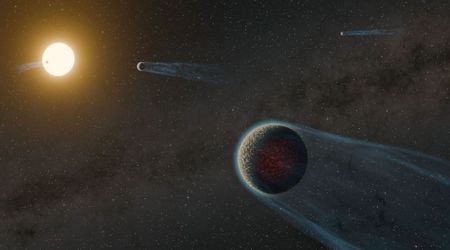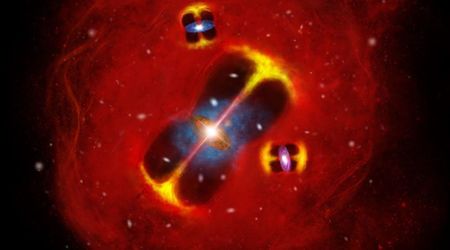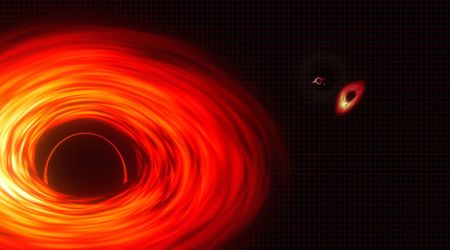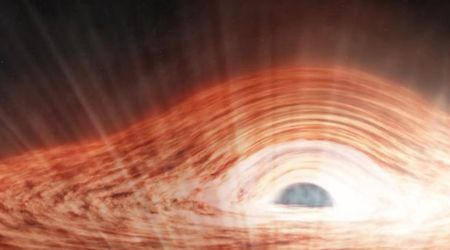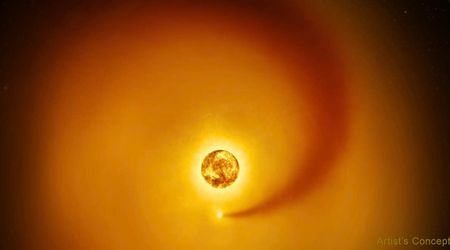NASA’s James Webb reveals the largest map of universe ever created, capturing more than 13 billion years

The multinational scientific collaboration COSMOS released data on the largest map of the universe. The data was gathered by the James Webb Space Telescope (JWST), and the project was named COSMOS-Web field, according to a statement by UC Santa Barbara. The imaging recorded around 800,000 galaxies that spanned across time, challenging the ideas of an infant universe. The COSMOS-Web composite image goes back around 13.5 billion years, and the universe is about 13.8 billion years old, indicating that the map covers 98% of all cosmic time.

“Our goal was to construct this deep field of space on a physical scale that far exceeded anything that had been done before,” stated UC Santa Barbara physics professor Caitlin Casey. “If you had a printout of the Hubble Ultra Deep Field on a standard piece of paper, our image would be slightly larger than a 13-foot by 13-foot-wide mural at the same depth,” added Casey, who co-leads the COSMOS collaboration with Astrophysicist Jeyhan Kartaltepe of the Rochester Institute of Technology. It was significantly larger and covered a wide view of the cosmic environment.
The Cosmic Evolution Survey (COSMOS) collaboration has unveiled the largest map of the universe ever created, featuring a catalog of nearly 800,000 galaxies spanning approximately 98% of cosmic time.
— Monkeys (@monkeys_com_co) June 8, 2025
Using data collected by the James Webb Space Telescope over 255 hours of… pic.twitter.com/smbiBdQxMg
The James Webb telescope observed a region of space known as the COSMOS field for 255 hours, according to LiveScience. This part of the sky had limited stars, gas clouds, or other components that could block the view of the deep universe. Scientists used the telescope to survey the area through various wavelengths of light, as the Webb was equipped with infrared sensitivity. It was handy because the universe was expanding, and visible light stretched out as it moved away from the source to the other end of the universe, turning it into infrared light.

The telescope detected these faint light signatures from the beginning of time, otherwise invisible to other telescopes. The scientists wondered if the JWST datasets would be capable of breaking the existing cosmological models. “The big surprise is that with JWST, we see roughly 10 times more galaxies than expected at these incredible distances. We're also seeing supermassive black holes that are not even visible with Hubble,” Casey highlighted. Though the raw data from the COSMOS field observations were made public, they had to be technically processed to be accessed.
The James Webb Space Telescope has captured the largest-ever panorama of the early universe, featuring 800,000 galaxies in breathtaking detail. pic.twitter.com/q0olGIwygw
— Live From Europa (@LiveFromEuropa) June 7, 2025
The data released by the team contained the largest sequenced image ever captured by the Webb along with an interactive catalog. This details the properties of each galaxy and formulates a rich and vast cosmic record, as per Space.com. Kartaltepe mentioned how this level of the dataset was unique and might not be replicated. The COSMOS-Web field could easily become a good data reference for scientists in various fields for a long time to come.

Astronomers have allotted time to ensure the telescope and study their preferred features of the universe. The parameters of the COSMOS-Web team also help to understand the nature of these vast galaxies. Their size, shape, and brightness could be key to understanding how they existed in isolation or within a crowd. The team also analyzed the datasets to formulate and publish scientific papers that explored the depth of their find. They examined the galaxies and their luminous nature and traced the evolution of star formation over 12 billion years.
